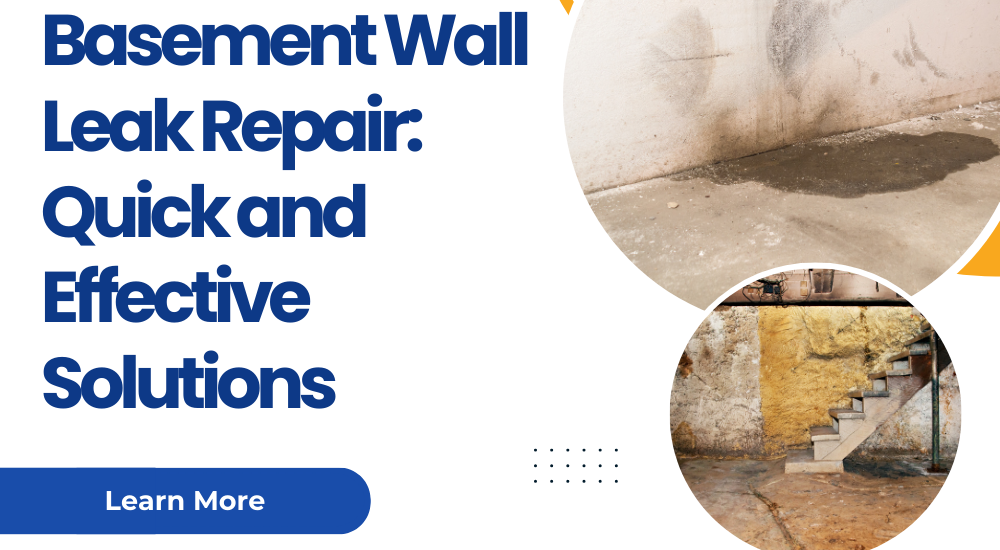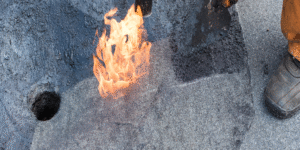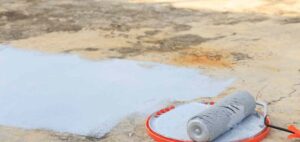Leaky basement walls present more than a nuisance; they undermine critical structure components of your property, affect the indoor air quality, and impact the long-term value of your building. It can be damp patches, peeling paint, or visible seepage; damp walls are often ignored until the damage has progressed to such a stage that it invites expensive repairs alongside mold growth and foundation damage. Thankfully, with proper strategies and materials tailored to your structure, basement wall leaks can be mitigated both repairatively and preventatively.
With years of experience firmly positioning Huafeng Waterproof Materials Co., Ltd. as a leading name in waterproofing solutions known for their reliability and lasting value, we are committed to showing you the best ways to fix and prevent basement wall leaks along with their underlying causes and warning signs through this guide.
Common Causes of Basement Wall Leaks
Before solving any issue, it is crucial to understand the problems. Among the many causes of basement wall leakage, these stand out:
-
Hydrostatic Pressure
Heavy rain or high groundwater levels increase pressure on the foundation walls, bypassing the walls and forcing water through cracks and porous cement. -
Poor Drainage
Obstructed gutters, landscapes with negative gradients, or short downspouts congested water away from the house instead of directing it away. -
Foundation Cracks
Natural settling or soil movement is characteristic of ancient structures. Such constructions are susceptible to cracking which in turn allows water to breach the walls. -
Failed Waterproofing
A waterproofing membrane that has aged or been improperly applied will eventually break and lose its ability to restrict moisture. -
Window Well Failures
Poor drainage in basement window wells can funnel rainwater directly into your basement.
Signs You Have a Basement Wall Leak
Basement wall leaks don’t always show obvious symptoms right away. Here’s what to look for:
-
Damp or stained basement walls
-
Peeling paint or bubbling wallpaper
-
White mineral deposits (efflorescence)
-
Musty odors or visible mold
-
Water puddles near basement walls
-
Visible wall cracks
Tip: If you notice any of these signs, take action early. Minor basement wall leaks can quickly turn into major structural problems.
Proven Repair Methods for Basement Wall Leaks
Depending on the source and severity of the leak, here are the most reliable repair methods:
1. Interior Crack Injection
For minor basement wall leaks and hairline cracks, polyurethane or epoxy injections seal the gap from inside.
Best for:
-
Non-structural cracks
-
Low-pressure water intrusion
Pros:
-
Quick and affordable
-
No exterior excavation needed
Cons:
-
Not suitable for severe hydrostatic pressure
-
May need reapplication over time
2. Exterior Waterproofing System
This long-term solution involves exposing the outer foundation, repairing cracks, and applying a new waterproof membrane.
Steps include:
-
Excavation around the foundation
-
Repair and cleaning
-
Membrane application
-
Drainage installation (e.g., French drains)
Best for:
-
Persistent leaks
-
High-rainfall or flood-prone areas
Pros:
-
Stops water before it enters
-
Durable and effective
Cons:
-
Labor-intensive
-
Costlier than interior options
3. Interior Drainage System
Also called a French drain, this system collects water along the basement perimeter and channels it to a sump pump.
Installation involves:
-
Cutting the basement floor
-
Installing drainage pipe and gravel
-
Connecting to a sump pump
Best for:
-
Chronic leakage
-
Finished basements
Pros:
-
Works with high water tables
-
Minimizes wall contact with moisture
Cons:
-
Requires floor excavation
-
Not ideal for slab-on-grade homes
4. Sump Pump Installation
A sump pump removes collected groundwater before it causes basement wall leak or flooding.
Options:
-
Pedestal type (easier maintenance)
-
Submersible type (quieter, more powerful)
Pros:
-
Prevents water buildup
-
Essential for interior drainage
Cons:
-
Requires electricity
-
Needs regular maintenance
5. Gutter and Landscape Adjustments
Sometimes the simplest solution prevents the need for basement wall leak repair altogether.
Quick fixes:
-
Clean and extend gutters
-
Slope soil away from the home
-
Install downspout extensions (4–6 ft minimum)
Best for:
-
Prevention and general protection
-
Supporting full waterproofing systems
When to Call a Waterproofing Professional
While small repairs are manageable as DIY projects, serious basement wall leaks need professional attention. This is especially true if:
Cracks are structural in nature or expanding
Widespread water damage
Initial leak repairs don’t hold
Hiring a specialist like Huafeng Waterproof Materials Co., Ltd. ensures:
Correct identification of the root cause
Warrantied, effective outcomes
Certified, industrial-grade materials used
Installations by licensed technicians following codes
Final Thoughts
The structural integrity of the home may be jeopardized by basement wall leaks, but these leaks can be fixed and prevented with a well-thought-out approach. Whether it’s responsive sealant application or a thorough waterproofing system, addressing issues promptly makes all the difference.
Ready to Build Better Protection?
📞 Get in Touch with Our Experts Today – Let’s Build Something Waterproof, Together!
- Phone: +86 138 6365 6701
- Email: Huafengwaterproof@gmail.com
- WhatsApp: +86 138 6365 6701







